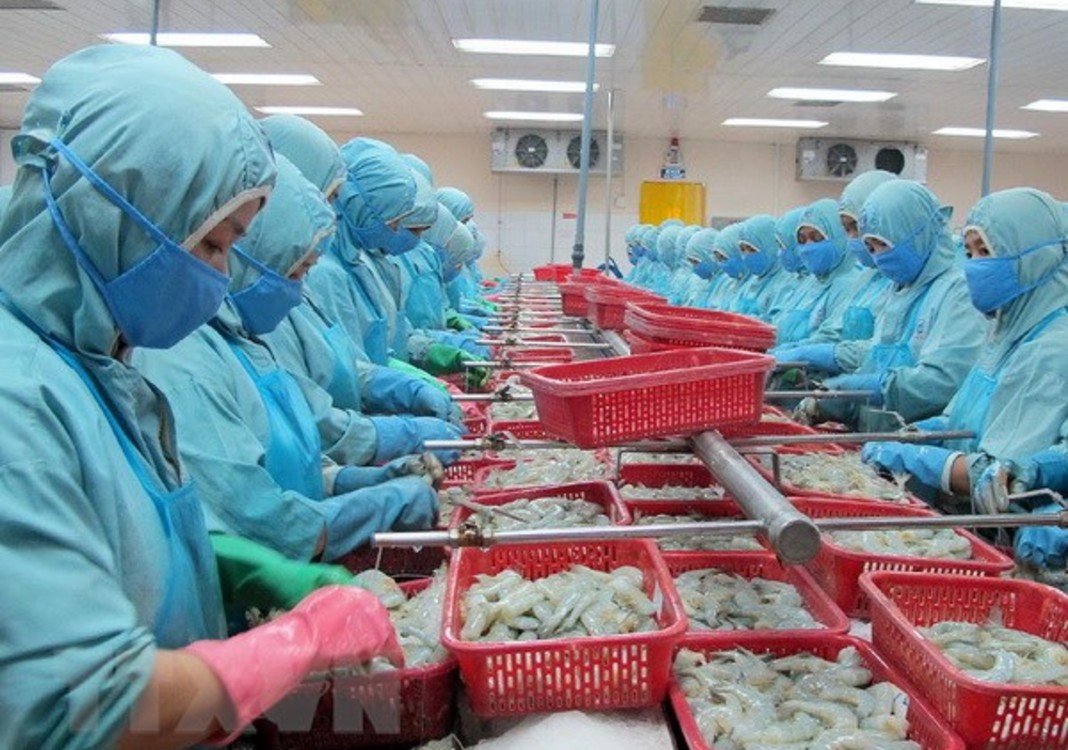HCMC – Vietnam’s seafood exports to the European Union have plunged significantly since the European Commission issued a yellow card for illegal, unreported and unregulated (IUU) fishing to Vietnam in October 2017, according to the Vietnam Association of Seafood Exporters and Producers (VASEP).
VASEP said at a conference on August 10 that if Vietnam is unable to have the yellow card lifted soon or receives a red card warning, the country’s seafood sector would lose an estimated US$480 million in annual export revenue.
Vietnam’s total marine product exports to the EU have dipped by 12%, or US$183.5 million, in just two years after the yellow card came out.
Of these, cephalopod plunged the most with a 37% drop, bivalve mollusk decreased by 11%, tuna fell by nearly 2% and crabs edged down by 11%. The exports of farmed products to the EU also plummeted by 13% from 2017 to 2019.
In 2020, Vietnam’s seafood exports to the EU were affected by both the Covid-19 pandemic and the IUU yellow card, resulting in a turnover of only US$959 million, a fall of 5.7% against 2019.
Since 2018, the EU has dropped from its position as the second largest of Vietnam’s seafood import markets to the fifth place, now ranking behind Japan, the United States, South Korea and the ASEAN countries.
In case a red card is issued by the EU, the immediate and short-term impact on Vietnam’s seafood sector would be a trade ban from the European Commission if the country fails to address the requirements for combating IUU fishing.
VASEP estimated that the fisheries industry of Vietnam would directly lose US$480 million a year for losing the EU market.
Besides, aquaculture would lose around US$93 million from indirect impacts, including an increasingly negative reputation, the imposed burden of customs control and missing opportunities to benefit from the EU-Vietnam Free Trade Agreement’s (EVFTA) preferential tax levels.
The medium-term impact if the ban lasts for 2-3 years includes the disruption of the seafood sector, in which at least 30% of capture fisheries would shrink in scale.
However, if Vietnam can remove the IUU yellow card soon and make use of tariff preferences and institutional changes from the EVFTA, the opportunity to recover and grow back in the EU market is feasible.
If this happens, Vietnam will have more opportunities in other markets, and can better compete with other producing and exporting countries. In that scenario, the country’s seafood exports will surely reach the goal of US$16-18 billion before 2030.
With vast aquatic resources, Vietnam is the fourth largest fisheries producer in the world and the third largest source of aquatic products for the world market.
Vietnam’s fisheries industry has rapidly transformed itself into a commodity-oriented industry with its exports reaching US$8.5-9 billion a year. According to VASEP, fishery and aquaculture commodities represent Vietnam’s fifth largest export in value, accounting for approximately 4% of the country’s exports in 2018.
Vietnamese seafood products have reached over 160 markets and stood firm in many large and rigorous markets such as the EU, the U.S., Japan, and South Korea, which have a great influence on the world market.
However, consumers in the world market are increasingly interested in responsible and sustainable products. Therefore, combating IUU fishing is critical first and foremost for the sustainable development of Vietnam’s fisheries, as well as responding to market trends and regulations so that Vietnam maintains its reputation and foothold in the markets.
VASEP said a shift from quantity to quality could enable Vietnam to boost the competitiveness of its fisheries sector, seize emerging opportunities in a more competitive manner and meet its seafood export targets.









